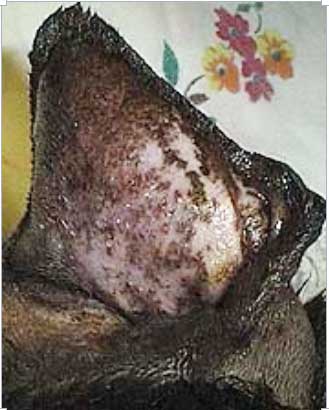

It may be supported by a bandage or other material applied directly to the ear, or by bandaging the ear against the head. Finally, the pinna is supported to minimize further damage and promote healing. A surgical drain may be placed to promote drainage.
#Aural hematoma surgery skin#
Next, the empty space (called "dead space") is obliterated by placing numerous sutures through the ear, which will promote controlled scar tissue formation, reattaching the cartilage to the skin and helping prevent future recurrence. First, the skin over the hematoma is surgically incised to drain the blood and remove any blood clots. The actual surgical technique varies with the individual circumstances and veterinarian's preference, but always involves the same basic steps. The preferred method of treatment involves surgical correction of the hematoma. The hematoma must be treated as soon as possible or permanent disfigurement may result. How is a hematoma treated? "The hematoma must be treated as soon as possible or permanent disfigurement may result."Īs well as treating the hematoma, it is important to treat the underlying cause. Pets with clotting or bleeding disorders may also develop hematomas, with or without a history of trauma. Dogs with long, floppy ears are at greater risk for developing ear hematomas. It is also possible that a foreign body initiated the shaking but was later dislodged.


In some cases, there may be a piece of foreign material lodged in the ear canal such as a tick, piece of grass, etc. Dogs with ear infections may violently shake their head or scratch their ears causing an aural hematoma. This is most commonly associated with trauma such as scratching or shaking the ears and bite wounds. This is called an aural or ear hematoma.Įar hematomas occur when a blood vessel in the ear bursts and bleeds into the space between the ear cartilage and skin. A hematoma is sometimes referred to as a "blood blister." The most common type of hematoma in the dog is that affecting the pinna or ear flap. A hematoma is a localized mass of blood that is confined within an organ or tissue.


 0 kommentar(er)
0 kommentar(er)
